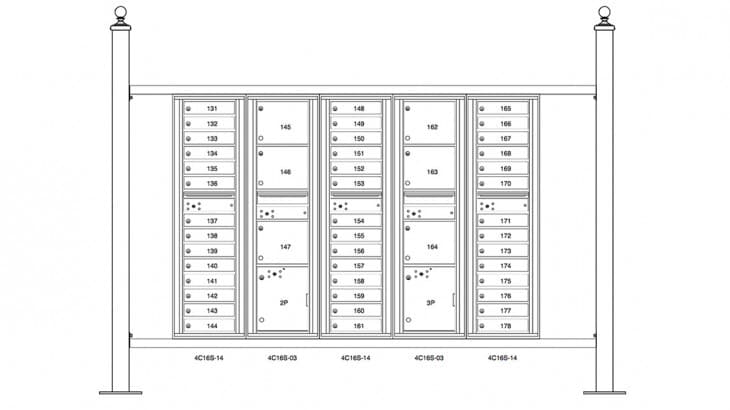Earlier this month, we talked about how the Wizard mode of our online configurator is a great starting point for planning your mailbox installations. But what if you want to take your design a little further?
Enter Power mode.
Jim Hendricks, Marketing Programmer/Analyst, Florence Manufacturing, and the computer programming brains behind the online configurator, shared more about this industry-unique design tool.
When asked what makes Power mode so, well, powerful, Jim explained, “It allows for more architectural design within the layout, so users can go beyond the standard and create a really unique design.”
Wizard mode gives a good helping hand, he said, but Power mode is where architects can edit the layout and really get into designing a mailbox installation.
“The coolest part is being able to take our standard line of products, which is substantial, and integrate the modules to exactly meet your design criteria,” Jim said. “It’s flexible across different types of projects.”
With Power mode, you can:
- Change door sizes
- Move mailbox modules
- Mix and match mailbox heights
- Design up to eight different walls, each up to 40 feet, within a given configurator project (great for larger installations)
- Remove extra mailslots
- Output for dimensioned drawings (also in Wizard)
- Specify color (also in Wizard)
- Specify door text fonts (also in Wizard)
- Specify lock types (also in Wizard)
You can preview your design right then and there, and even submit it for a quote so you can plan your budget according to the exact design you created.
“By using the online configurator to match your project’s specs, you’ll likely save on cost and space,” Jim added.
Over the years, there have been many iterations of the system. With each release, Jim adds enhancements like save-and-continue functionality, as well as a cloning feature.
Projects stored under a user’s account (simply login under My Account > My Projects to see them) can be duplicated.
“What that will do is populate the entire application with all the data you used previously,” Jim explained. “It’s a great way to quickly reproduce projects or drawings that you’re going to use multiple times for bids, contractors and more, or provide you with an excellent starting point for a new project.”
To design a mailbox installation of your own, visit our online configurator:
Once you’re done, save your configuration and click to submit. You’ll be prompted to login (if you haven’t already) and then you can specify the format you want to receive your drawings (BIM Revit, CAD, PDF, DWG), which can then be placed directly into your existing project.
We also have a complete BIM library of standard products that can be directly imported into Revit. If you haven’t updated your specs in a while, download our current library today!


